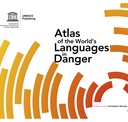Explore

Atlas of the world's languages in danger
Over recent decades, as information technologies have brought more of the world’s knowledge to more of the world’s people at unprecedented speed, humanity’s linguistic diversity has been shrinking. That process is inexorable but not inevitable: international cooperation and well-planned, intelligently implemented language policies can bolster the ongoing efforts of speaker communities to maintain their mother tongues and pass them on to their children, even in the face of powerful forces pressing them to shift towards larger languages. When UNESCO published the first edition of the Atlas of the World’s Languages in Danger in 1996, it sounded an international alarm that has now been heard by public officials and policy makers, language communities and scholars, the media and civil society worldwide. With this third edition – available since February 2009 in an online digital format – we note that while the gravity and urgency of the problem of language loss are no less acute today, our tools for understanding the phenomenon are increasingly effective, and our repertoire of proven responses continues to grow daily.
Why read this book? Have your say.
You must be logged in to comment.
Rights Information
Are you the author or publisher of this work? If so, you can claim it as yours by registering as an Unglue.it rights holder.Downloads
- 1305 - pdf (CC BY-SA) at Unglue.it.
Keywords
- Cartography
- Language Arts & Disciplines
- Language Arts & Disciplines / Linguistics
- Language Arts & Disciplines / Linguistics / Historical & Comparative
- Linguistics
- Social Science
- Social Science / Human Geography
Links
web: http://unesdoc.unesco.org/ulis/cgi-bin/ulis.pl?catno=187026&set=5191EADD_1_427&gp=1&lin=1Editions


